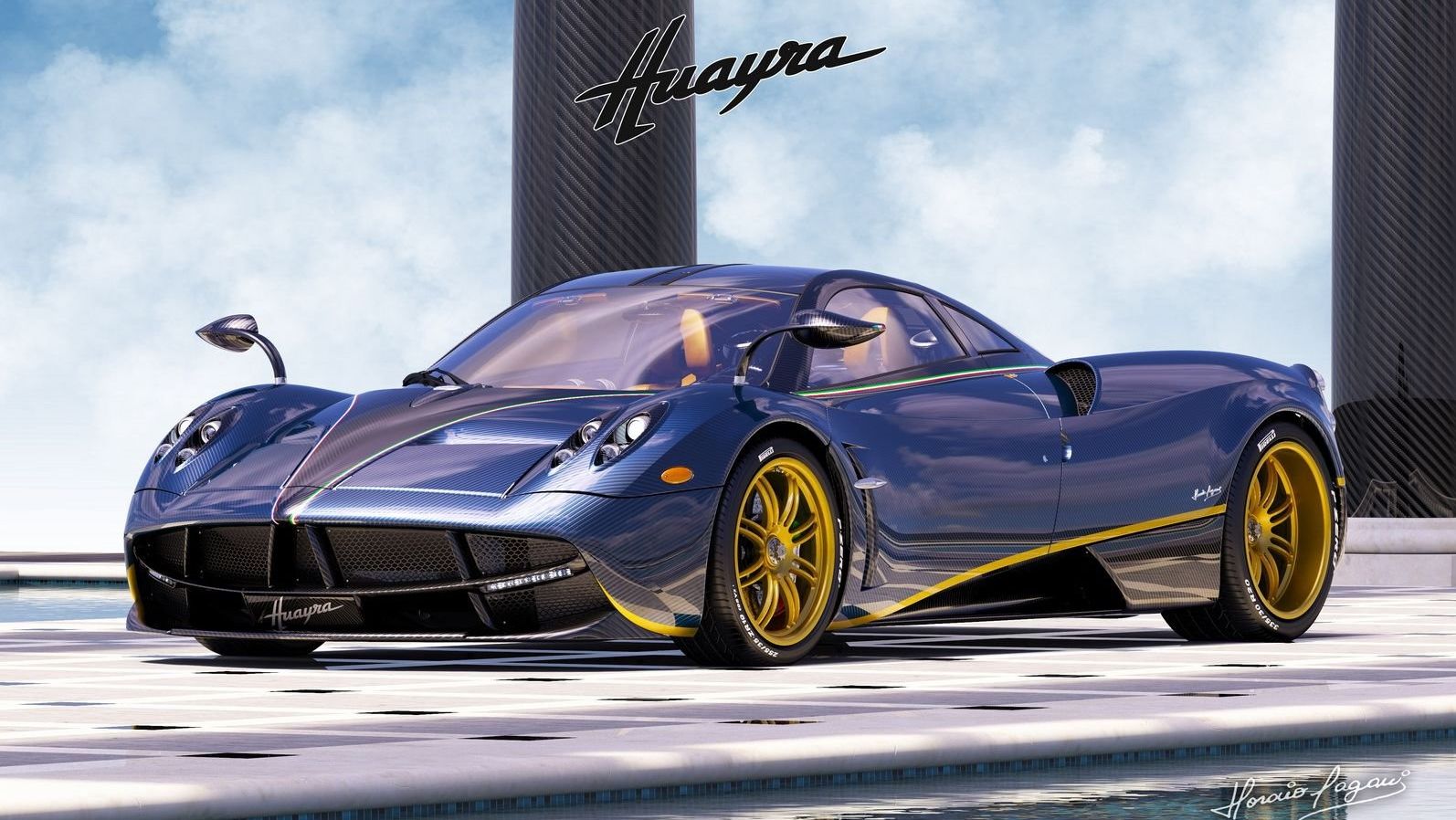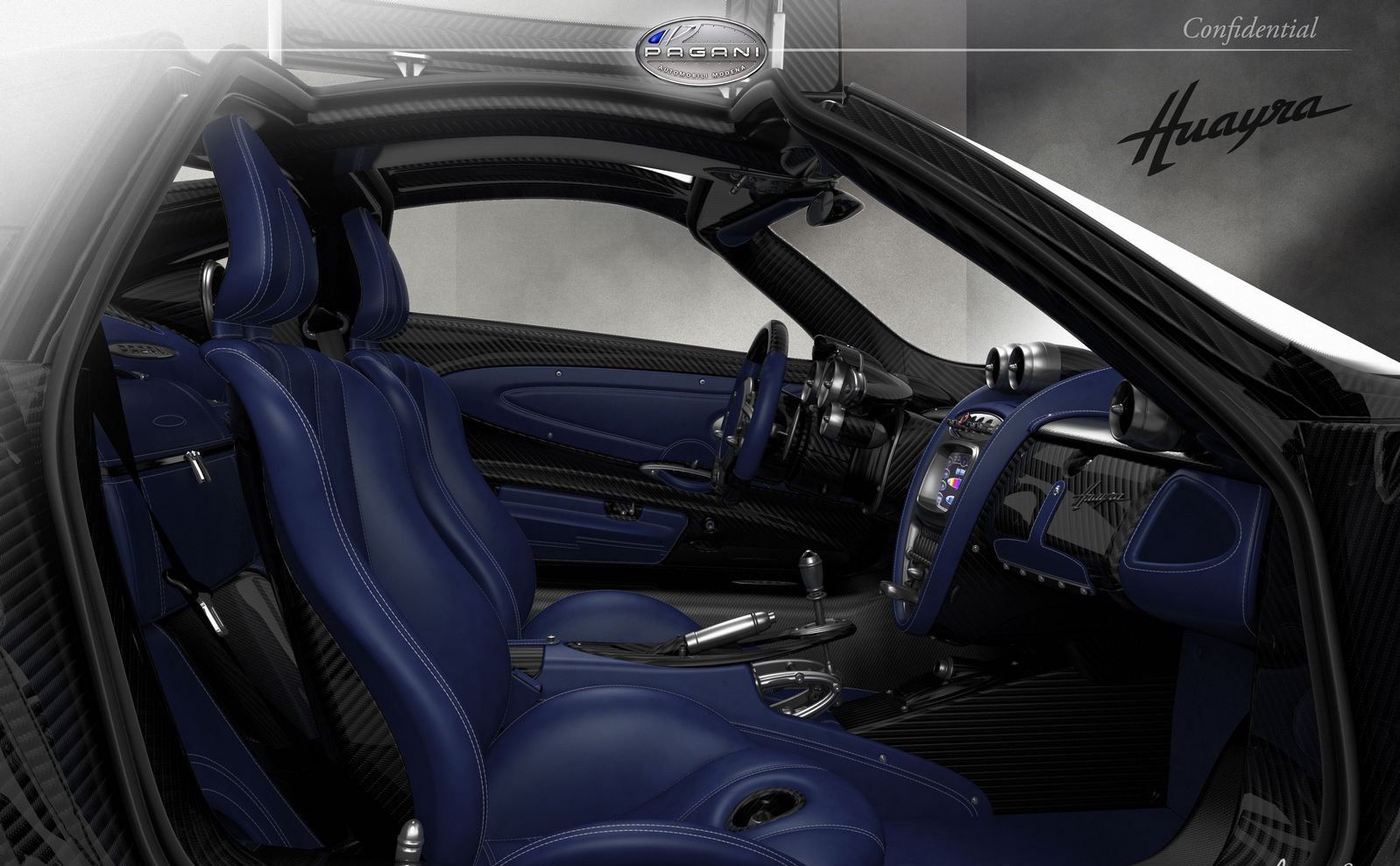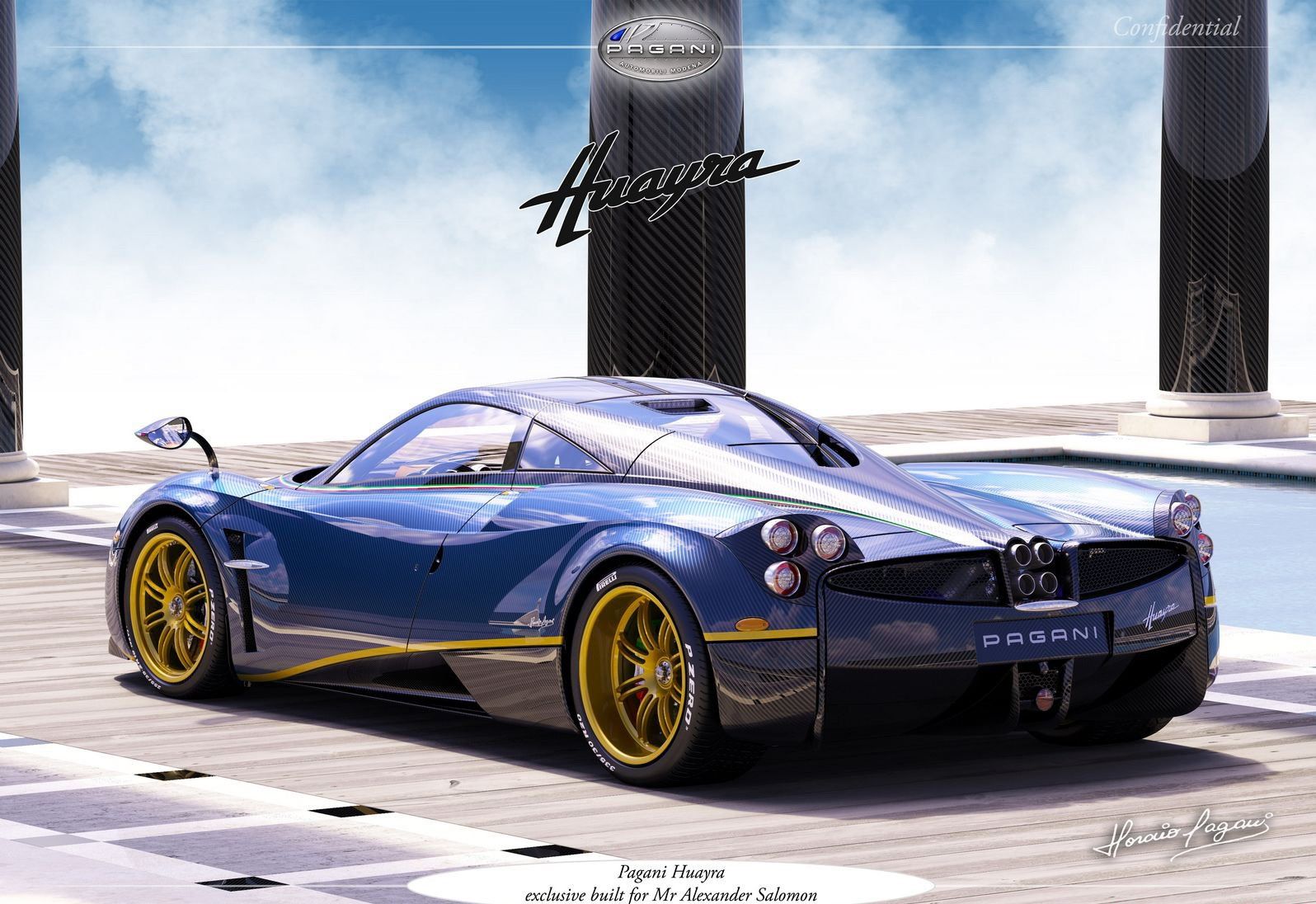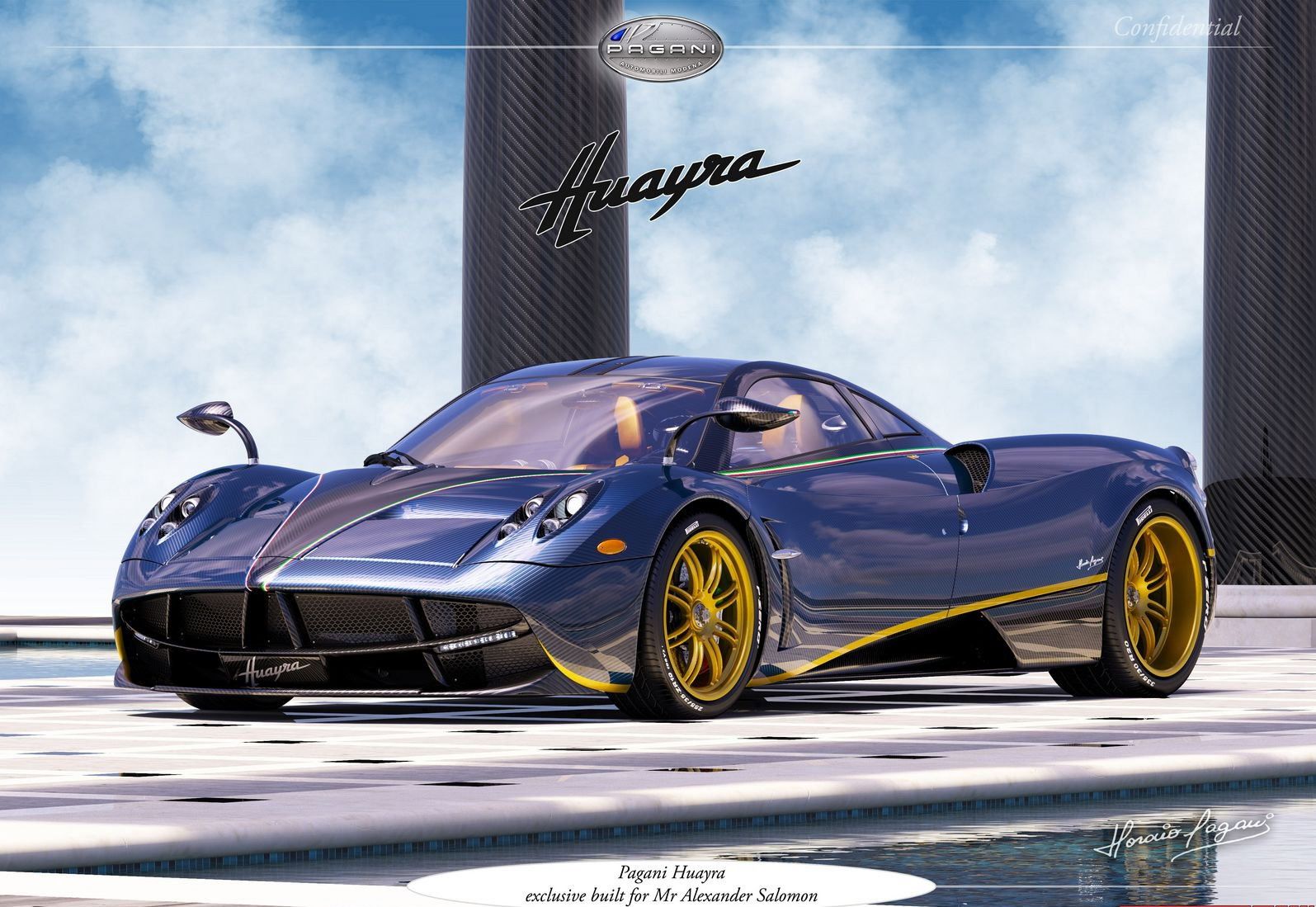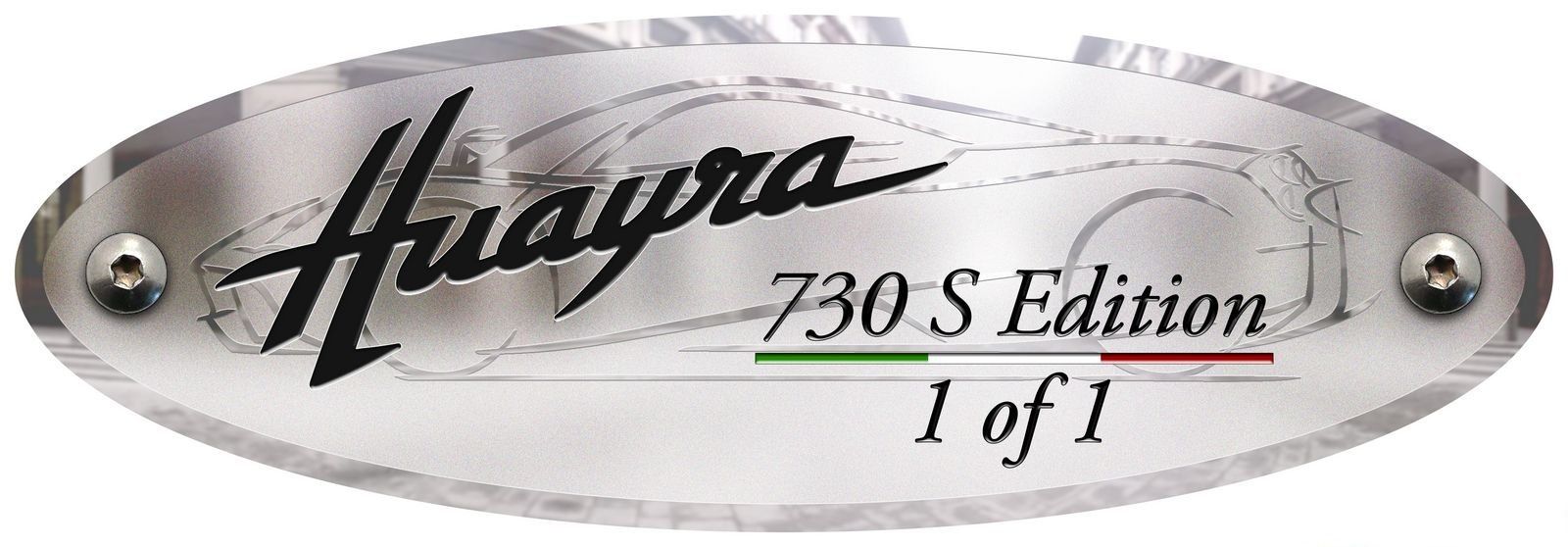It’s still hard to overstate what Horacio Pagani and the company that carries his name have accomplished since unveiling the original Zonda->ke942 in 1999. Think about all the supercar->ke177 start-ups you see on a near weekly basis foisting renders of what will inevitably end up as vaporware within the depths of the Internet. Pagani->ke66 is one of the rare exceptions. Not only has this tiny company been successful, its been able to show the Italian supercar establishment a few things about how to build truly special cars.
One way Pagani has done this is with its one-off program, and now the company has released new renders of the second Huayra one-off, and the follow-up to the Huayra La Monza Lisa, called the Huayra 730 S.
The 730 S is built exclusively for Mexican movie producer, entrepreneur and self-confessed car-nut Alejandro Salomon. Salomon already has a garage that includes a Lamborghini Aventador,->ke3624 Ferrari 458 Italia and a fleet of Mercedes->ke187 and Bentleys.->ke15 He’s not exactly wanting for exotic metal at this time, but I’d probably do the same if I were a billionaire. Saloman has nicknamed his new car “the Huayrab.”
Click past the jump to read more about the Pagani Huayra 730 S.
2015 Pagani Huayra 730 S
- Make: Array
- Model: 2015 Pagani Huayra 730 S
- Engine/Motor: V12
- Horsepower: 730
- Torque: 737
- [do not use] Vehicle Model: Array
Exterior
You know how some of your favorite albums are ones you weren’t sure about when you first listened to them. They challenge you and then something clicks. I had hoped this would be the case when I first saw the Huayra in 2012. It wasn’t. The aquatic looks of the Huayra still haven’t grown on me. It simply doesn’t have the purposeful, mechanical aggression of the Zonda, which could explain why other ultra-rich guys are still willing to pay ridiculous sums of money to have one-off Zondas built years after the Huayra’s introduction. Feel free to leave disparaging comments below.
Moving on from my completely subjective critique of the Huayra’s shape, this particular car has some unique details inspired by two Pagani one-offs of the past. The Zonda Tricolore inspired the blue lacquer on bare carbon-fiber finish, as well as the subtle Italian flag motifs (which happens to be the same colors as the Mexican flag) found on the hood and brake calipers, while the gold side stripes and gold wheels are homages to the Zonda R.
Interior
Saloman has said on his Instagram page his car’s interior will not be the beige color shown in the renders. He’s keeping that as a surprise for now, so, for all we know, if could end up with purple leopard-print leather with tarantula web stitching, which is not that far outside the realm of possibility when it comes to Pagani interiors.
As we all know, Pagani puts together some of the most incredible interiors in world. If Jules Verne were alive today, he would be working in Pagani’s interior design department. The Huayra’s interior is a cohesive blending of high-end steam-punk leather straps, expensive aluminum instrumentation and carbon-fiber panels. It’s busy, but it makes the occupant feel like they’re sitting in a thing worth $2 million, which really can’t be said for other cars at this price-point.
Drivetrain
It’s yet to be confirmed but its name suggests the Huayra 730 S will have 730 horsepower and 737 pound-feet of torque, which are the same figure as a normal Huayra. Pagani has always used Mercedes-AMG-built V-12s in its cars, and Salomon has personally requested that AMG engine builder Michael Kübler build the 6.0-liter, M158, biturbo V-12 that will be finding its way into his car.
Power is sent to the rear-wheels via a seven-speed single-clutch sequential gearbox, which allows the Huayra to squirt to 60 mph in 3.3 seconds, and on to a top speed of 230 mph. The looks may not be to my liking but this thing is definitely slippery.
The Italian flag-festooned brakes are four-piston Brembos all around, with drilled carbon-ceramic rotors. The Huayra’s dry curb-weight of 2,980 pounds combined with its massive Pirellis allow an astounding 1.66g of lateral acceleration.
Prices
Neither Saloman or Pagani have announced pricing for the one-of-a-kind 730 S, but it’s definitely one of those “if you have to ask” cases. “Normal” Huayras usually go for around $2 million, so expect this one to go for a few hundred-thousand-dollars more.
Competitors
LaFerrari
Next to the Huayra, the $1.3 million LaFerrari looks like a relative bargain. Unfortunately, they’re completely sold out, and privately sold examples are now approaching $3 million.
To refresh, the LaFerrari is powered by an 800-horsepower V-12, with a 163-horsepower electric motor playing a supporting role to sharpen throttle response. It’s the fastest road car ever around Ferrari’s Fiorano test track, recording a time just under 1 minute and 20 seconds. That’s five seconds quicker than an Enzo.
Unlike the Pagani, the Ferrari’s interior is all business. Carbon fiber is everywhere and everything you see, feel and touch serves a purpose. The seats are affixed directly to the carbon-fiber tub for maximum rear-end data upload, and the steering wheel and pedal box are adjustable to accommodate drivers of different sizes.
McLaren P1
The McLaren P1 is without a doubt the other hybrid hypercar of the moment, and as the successor the McLaren F1 of 1992, it’s a more than lived up to the legend of its forbearer.
Its twin-turbo V-8 and electric motor combine for a total of 903 horsepower, and the drivetrain does a neat trick McLaren refers to as “torque filling” wherein the electric motor compensates for the turbo-lag normally associated with highly boosted, turbocharged engines. It translates to razor-sharp throttle response and other worldly performance.
Also, like the LaFerrari, its relatively cheap considering what it’s capable of. New ones are completely sold out, but secondhand examples are currently going for around $2 million -- roughly the same as a new Huayra and about $1 million cheaper than a LaFerrari.
Koenigsegg One:1
If too many of your friends have McLarens and Ferraris, and you’re looking for an alternative to the Pagani Huayra within the world of boutique supercars, then Koenigsegg is without a doubt your best option.
As companies, Pagani and Koenigsegg have followed similar trajectories. Both were founded and are currently run by brilliant, autocratic, single-minded men, but where Pagani is all Italian flare and passion, the creations of Christian Von Koenigsegg exemplify a ruthless pursuit of technology and absolute speed. Think carbon-fiber wheels and 3D-printed variable turbos.
Take its latest One:1 for example. The name refers to the fact that its V-8 produces one megawatt of power, or 1,340 horsepower, and with a curb weight of just 1,340 kg (2,954 pounds), each horsepower only has to move one kg. That translates to a 0-60 time of 2.8 seconds and a top speed of 248 mph. The One:1 might be the most insane road car in the world.
Conclusion
Chances are, if you can afford to put a one-of-a-kind $2 million Italian supercar in your garage, you can also afford all of its rivals, a large yacht and a private plane. So, far be it for a guy working from his apartment on a couch telling you what you should buy.
But if you’re looking for the old-school, non-hybrid supercar experience with an interior like nothing else in this galaxy, then the Huayra is the way to go. It might seem low-tech compared to the hybrid wizardry of the P1 and LaFerrari, but there’s still more than enough performance there to give your neck muscles a serious work out.

